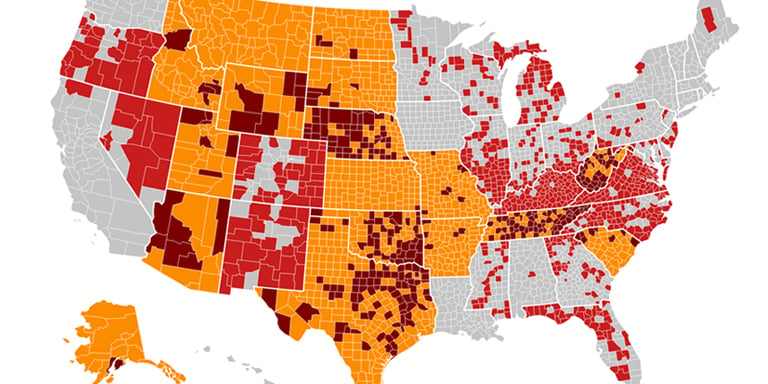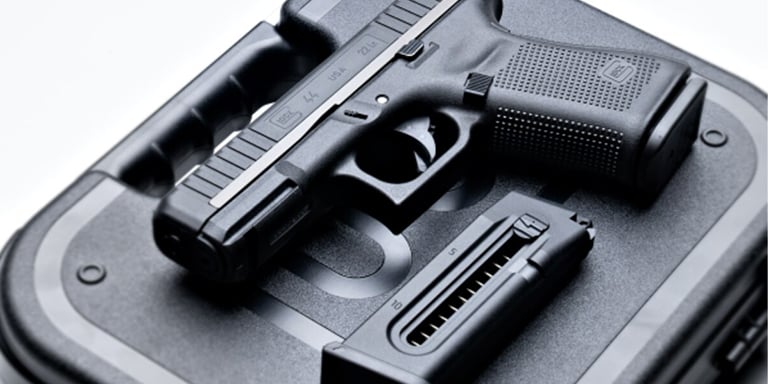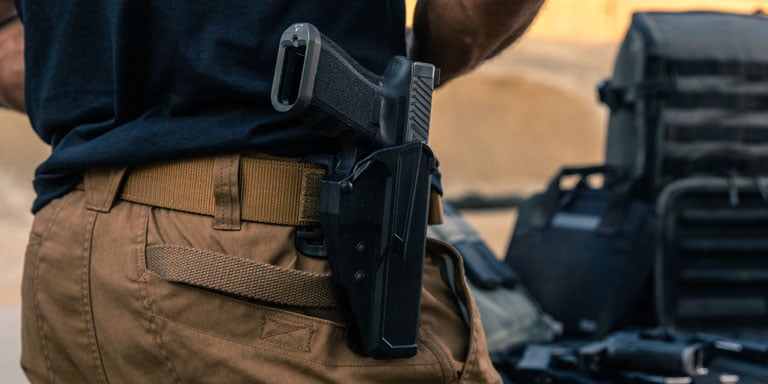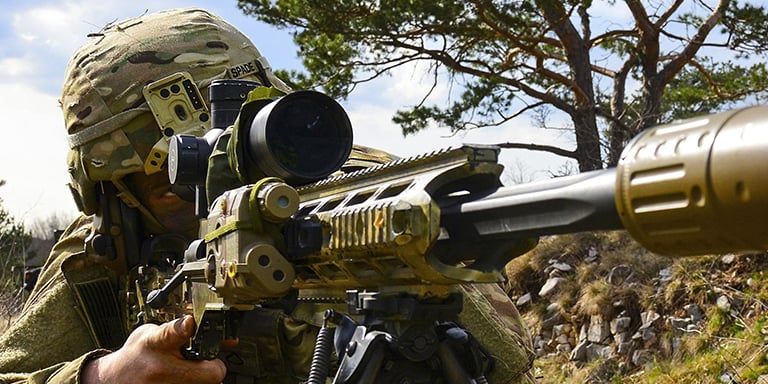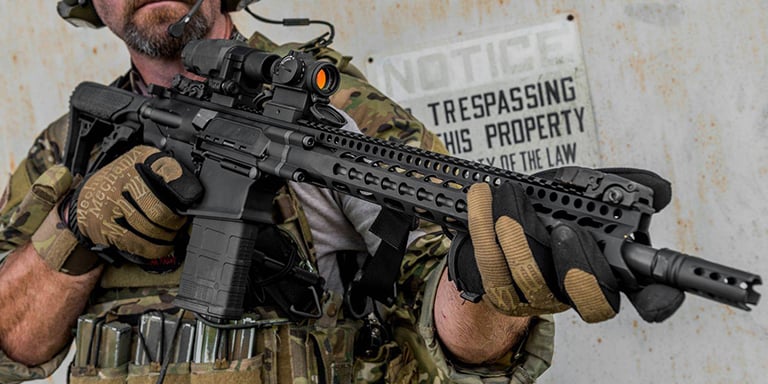
Many shooters are keen to know: should I buy a reflex sight or a holographic sight? Both are types of red dot sights, and to some extent, both can be used for similar purposes. There are, however, significant differences between them.
In this guide, we'll compare the pros and cons of reflex and holographic sights. We'll also review the best use cases for each and go over reticle styles, price, battery life and other considerations.
Reflex and Holographic Sights: How Do They Work?
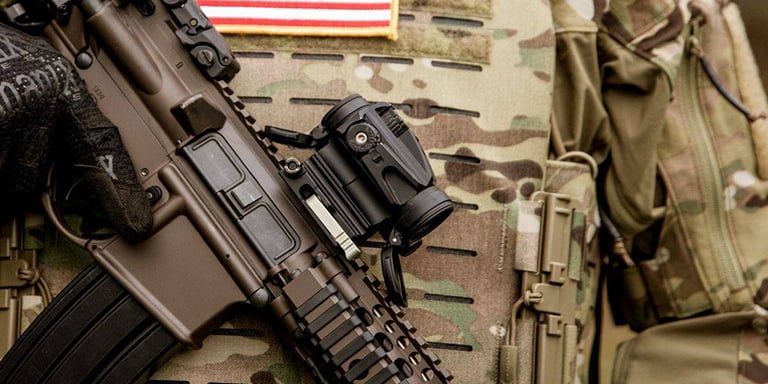
These two kinds of sights work in the same basic way: an emitter uses a laser to project an image onto a glass screen, either directly or after being reflected by one or more mirrors. This creates a reticle that appears to float in midair. The effect is possible because of a type of optical illusion called "Pepper's Ghost," first discovered by 19th-century stage magicians.
More than a century later, shooters and gunsmiths discovered that the same optical illusion could be used to dramatically increase shooting speed and accuracy when compared to traditional iron sights. When a reflex or holographic sight is installed and zeroed correctly, the user can acquire a sight picture more quickly and hit their target more reliably.
Technologically, reflex sights are the simpler of the two. A single LED projects a reticle or crosshair directly onto a single objective lens coated with a reflective material, usually a circular one. Holographic sights, by contrast, utilize complex microwave and holograph technology to project reticles that appear to be three-dimensional, most commonly onto square lenses. Although holographic sights are more expensive, larger, and often more fragile, they offer numerous advantages that reflex sights can't quite match.
Reflex Sights: Pros and Cons
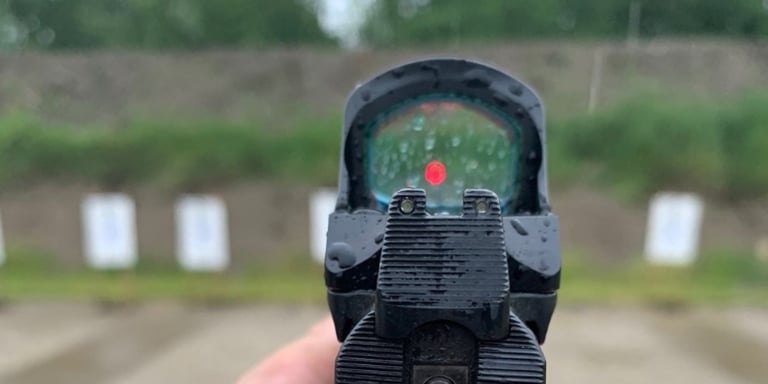
Most shooters who want to experiment with optics without spending too much money will choose a reflex sight as their introduction to red dot sights. Reflex sights are simpler, easier to use and less expensive. They also tend to offer a wider variety of reticle types, from simple dots to concentric reticles that can help with on-the-fly minute-of-angle adjustments.
Because reflex sights tend to have larger reticles, speedy target acquisition is easier. Reflex sights also help shooters practice good shooting fundamentals; you can't even see the reticle if there are significant problems with your stance, grip or sight picture. Parallax (noticeable changes in reticle position when looking through the sight at different angles) tends to be fairly minimal.
Although reflex sights are great for speed, they sacrifice some accuracy. For short-range engagements, it may not be a big deal if your shot is off by an inch or two, but over longer distances, a reflex sight may not be the best choice. Reflex sights offer good eye relief, meaning your sight picture doesn't have to be perfect to see the reticle and line up an accurate shot.
Compared to holographic sights, reflex sight reticles aren't as bright, making them harder to see in daylight or under harsh, fluorescent lights. They're also less likely to be compatible with night vision. In addition, the reticle resolution (or clarity) is typically not quite as good as you'll find in a holographic sight.
Holographic Sights: Pros and Cons
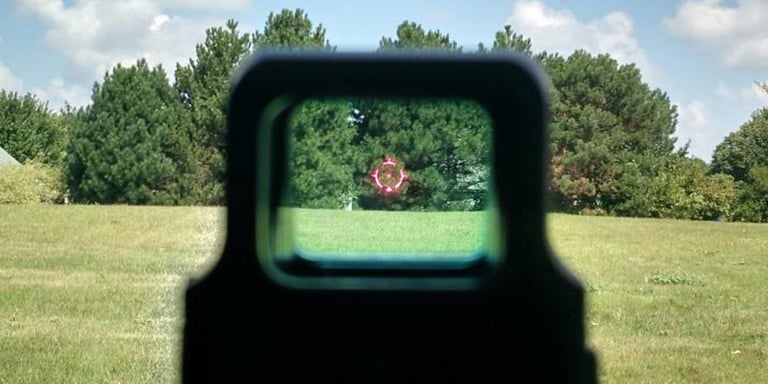
If you're willing to spend more, you'll find that, in general, holographic sights can do more for you. Unlike reflex sights, which become less useful at longer ranges, holographic sights can be used at almost any distance, as long as you can see the target without magnification. Their reticles are usually clearer, brighter and easier to see. Models with adjustable brightness are night-vision compatible.
Reflex sights offer good eye relief and low parallax, but holographic sights are even better in both respects. However, because the technology used to generate the image is more complicated, you'll have fewer choices in terms of the style and complexity of reticle designs. And because the sights themselves are larger and heavier, finding one that fits on your handgun could be challenging — the majority are designed for rifles or shotguns.
Whereas reflex sights prioritize speed over accuracy, holographic sights tend to go the other way. Because they're mostly designed for use on long guns, it's generally assumed that you'll have at least a little more time to line up your shot. A high-quality holographic sight can be just as accurate as a traditional scope at a similar price point, out to about 300 meters. However, if you plan to shoot much farther than that, you'll need a normal scope. Magnifiers exist for both reflex and holographic sights (neither of which offer magnification out of the box), but neither type of sight is well-suited to long-range precision shooting.
Other Considerations
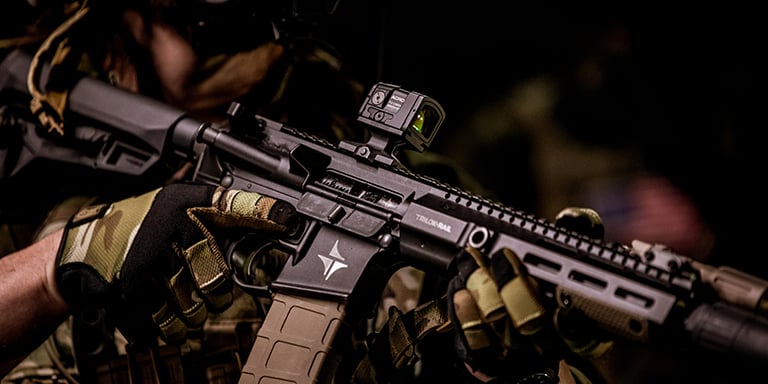
There's more to think about before you buy your next optic. The importance of these variables will depend largely on what you want to do with your new sight; we'll cover specific use cases in the next section.
Reticle Color
As the name "red dot sight" suggests, originally, all reticles were red. Today, you can choose from red, green, and blue reticles. Green and blue are much brighter and easier to see when there's lots of ambient light, but they drain battery power more quickly. Still, the difference in battery life isn't significant in most cases.
Battery Life
Even if you choose a blue or green reticle and turn the brightness all the way up, the battery in your sight should last for at least one year with regular use. Sights that use red reticles and lower brightness settings can go several years between battery changes.
Price
Almost without exception, holographic sights will cost more than reflex sights of comparable overall quality — sometimes as much as 50% more. Although holographic sights are better in many cases, you may not need to spend extra money for those increased capabilities, depending on what kind of shooting you plan to do.
Size, Weight and Durability
Reflex sights and holographic sights both contain glass and fragile electronics. Open reflex sights (those which lack an outer housing) are the most fragile of all, but they tend to be the least expensive. Closed reflex sights are the most durable, and holographic sights usually fall somewhere in between. They have the most delicate and complex components, but they have larger, heavier casings to protect them.
Versatility
As we've already indicated, holographic sights can do most of the things that reflex sights can do, and some things that they can't, making them more versatile. Reflex sights win out when you need maximum speed at close range, but for most other kinds of shooting, holographic sights are just as good or better.
Which Kind of Sight Is Best for Me?

Ultimately, the most important factor in your decision of which sight to buy is what you intend to use it for.
For simple target shooting at less than 50 meters, or for learning your way around red dot sights in general, an inexpensive reflex sight is likely the best choice.
Because most self-defense situations occur at very close range, and because speed usually trumps pinpoint accuracy, you'll probably want a reflex sight for your everyday carry (EDC) handgun. Plus, there are many more reflex sights than holographic sights for handguns.
If you live in a typical suburban home or an apartment, a reflex sight is also good for home defense. But if you live on a large plot of land where long-distance shots are more likely, you may prefer the increased range and accuracy of a holographic sight.
Police and military personnel who undertake dangerous combat operations generally prefer holographic sights for their increased versatility, accuracy and compatibility with night vision. However, some SWAT units, for instance, use reflex sights because their needs are more narrow. They tend to conduct operations indoors and in tight quarters, where speed is essential and most shots are taken at close range.
Hunters often choose holographic sights because they need maximum accuracy at medium range, or because they use night-vision gear to hunt when it's dark. However, if you plan to take many shots at game beyond about 300 meters, a traditional scope is probably your best bet.
Long-range precision shooters usually can't get much use out of either type of red dot sight because the distances in question are simply too long. Virtually all precision rifle shooters use regular scopes.
Reflex sights and holographic sights are both excellent optics that are useful in a variety of situations. Although holographic sights "win" overall in a feature-by-feature comparison, they're not necessarily the best choice for every shooter. If you have the time and money to spare, experiment with both kinds to see which best fits your needs.
Did you find this article helpful?


